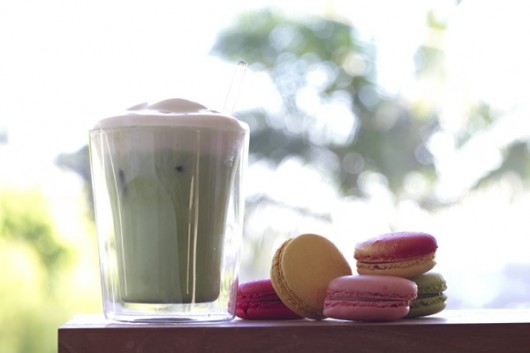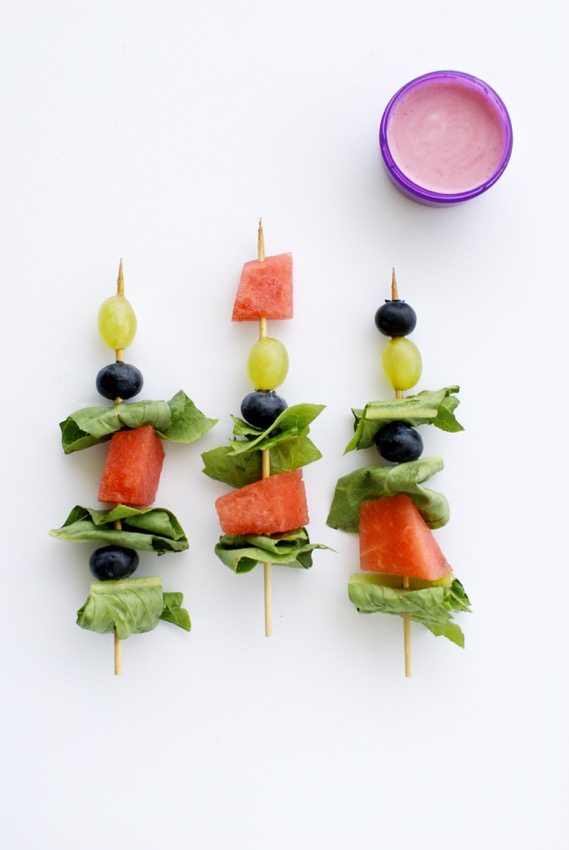Thank you to Alissa White, founder of Matcha Source, for today’s guest post! Matcha Source is an online retailer of premium grade matcha teas and accessories, specializing in a range of utensils from traditional bamboo whisks to modern latte frothers and martini shakers. For tips, recipes, and health benefits, visit them online or find them on Facebook and Twitter.
What is Matcha Powdered Green Tea?
Matcha is premium green tea powder from Japan used for drinking as tea or as an ingredient in recipes. It is the heart of the Japanese way of tea and has been celebrated in the traditional Japanese tea ceremony for hundreds of years.
What does matcha taste like?
Complex. Alluring. Bitter. Misunderstood. Addicting. That’s how Sophia F., a matcha enthusiast from Florida, describes the taste of matcha. Chlorophyll and amino acids give matcha its unique rich taste, an initial vegetal, astringent taste, followed by a lingering sweetness. Matcha made in the traditional Japanese style, whisked with water, is a full-bodied green tea. The intensity of the experience compares to one’s first taste of dark chocolate or red wine. When added as an ingredient, the taste of matcha becomes subtler. It adds the flavor and color of green tea to your creation, be it a smoothie, latte, savory sauce or pastry.
What are the health benefits of matcha?
Matcha is rich in nutrients, antioxidants, fiber and chlorophyll. The health benefits of matcha exceed those of other green teas because matcha drinkers ingest the whole leaf, not just the brewed water. One glass of matcha is the equivalent of 10 glasses of green tea in terms of nutritional value and antioxidant content. Read more about the health benefits of matcha tea here.
How is matcha produced?
Several weeks prior to harvest in the Spring, farmers cover the tea plants with bamboo mats or tarp, gradually reducing the amount of sunlight that reaches the plants. This step increases the chlorophyll content and turns the leaves dark green, giving matcha its distinct green color. After harvesting, the leaves are steamed, air dried, sorted for grade, and destemmed. Then the leaves are ground on hand carved stone grinding wheels. It takes one hour to grind a little over an ounce of matcha.
What can you do with matcha?
Matcha can be prepared in many different ways including iced (see recipe below), in a latte or smoothie or sprinkled over yogurt and oatmeal. Read more recipes from Matcha Source here.
Slow, Cold-Brewed Iced Matcha Tea
When preparing tea, temperature matters. Heat brings out the bitter flavors in matcha. Ice will bring out the sweetness and the rich creamy mouth feel unique to matcha. Try this technique for a slow cold-brewed cha for a summer feel-good elixir.
- Scoop two well rounded almond shaped tea scoops (about 2T) into a glass pitcher.
- Fill with ice.
- Let rest for several hours until all the ice melts.
- Pour over fresh ice into a chilled glass and enjoy.
Use best quality water and iced-cubes available. Add sugar, agave nectar or honey for sweeteners. Try ginger or lime for a tart finish. Brew a fresh pitcher everyday all summer long. Keep some in your favorite thermos and enjoy iced-matcha on a bike ride, at a picnic or on a trip.
Want something equally refreshing but creamier and heartier? Try a Matcha Iced Latte, Matcha Smoothie, or one of these other delicious recipes!








No Comments